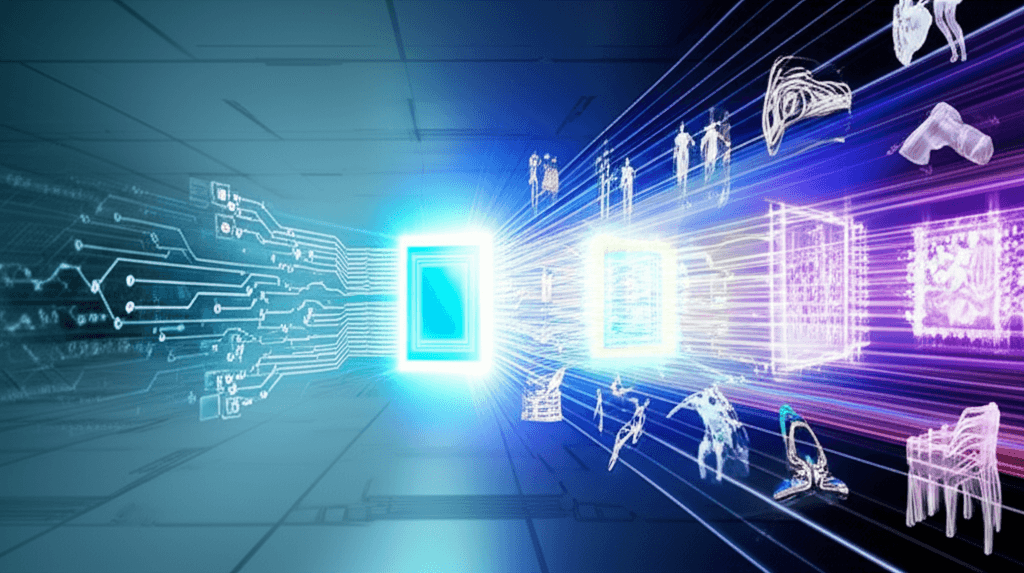Tencent's New AI Transforms 3D Asset Creation, Delivering Art-Grade Models Fast
From text to stunning 3D in seconds: Tencent's Hunyuan3D-PolyGen AI slashes costs and accelerates digital world creation.
July 7, 2025

Tencent has introduced a potentially transformative technology for 3D asset creation with its Hunyuan3D-PolyGen model, a tool designed to produce "art-grade" 3D models for professional developers. This technology aims to alleviate a significant bottleneck in the creation of digital worlds for video games and other virtual environments. The time-consuming and expensive process of crafting high-quality 3D assets has long been a challenge for studios, and advancements in AI are now presenting a path to faster, more efficient production without compromising on quality.[1]
At the core of Tencent's offering is a sophisticated two-stage pipeline. The process begins with Hunyuan3D-DiT, a scalable flow-based diffusion transformer that constructs the initial 3D mesh.[1][2] This model is responsible for generating the foundational geometry, capturing intricate details that were often missed by earlier generation models.[3] Following the creation of the base mesh, a second model, Hunyuan3D-Paint, applies high-resolution and vibrant textures.[3][1] This decoupled approach, separating shape and texture generation, allows for greater flexibility and has demonstrated superior performance in both speed and adaptability.[3][2] The entire process can generate models from either text prompts or single images in a matter of seconds, a significant leap forward in efficiency.[4] For instance, internal use at Tencent Games has reportedly reduced 3D asset prototyping costs by 30%.[4][5] This system has already been applied in over 700 business scenarios within Tencent, including gaming, social networking, and Tencent Maps.[6]
The implications of this technology extend across numerous industries. In video game development, the ability to rapidly generate low-polygon models that are optimized for game engines like Unity and Unreal can dramatically improve design workflows.[1][7][2] The model can generate assets with controllable polygon counts, a crucial factor for game performance, and even has capabilities for automatic skeleton binding and animation.[2][6] Beyond gaming, virtual reality applications can benefit from the quick creation of realistic environments, and industrial design can utilize the technology for rapid prototyping.[7][4] The model also supports the generation of PBR (Physically Based Rendering) material maps, which provide more realistic visual effects compared to basic color maps.[8][2]
Subsequent iterations of the model, such as Hunyuan3D 2.5, have further enhanced these capabilities, boasting increased geometric precision and improved texture fidelity.[5][9] This newer version also addresses some of the limitations of its predecessor, such as improving the topology of generated models to make them more compatible with skeletal animation, a critical feature for creating practical assets for games and films.[5] Models are generated with high polygon counts, which, while detailed, often require manual retopology for real-time applications.[9] To address this, Tencent has promised future updates that will include automatic mesh optimization.[9] The open-source nature of Hunyuan3D is also a key feature, fostering community contributions and transparency.[10]
In conclusion, Tencent's Hunyuan3D-PolyGen represents a significant advancement in the field of AI-driven 3D content creation. By streamlining the traditionally complex and labor-intensive process of creating high-quality 3D assets, this technology has the potential to democratize 3D creation, making it more accessible to smaller developers and artists.[7][4] The ability to generate art-grade assets from simple text or image inputs in a fraction of the time it would take with traditional methods could revolutionize workflows in gaming, virtual reality, film, and beyond. As the technology continues to evolve and improve, its impact on the digital content landscape is poised to be both substantial and widespread.